Israel-Hamas War: What happened on day 73?
IDF finds killed Gaza hostages' SOS sign, chief says incident was avoidable • IDF publishes names of four more soldiers killed in Gaza
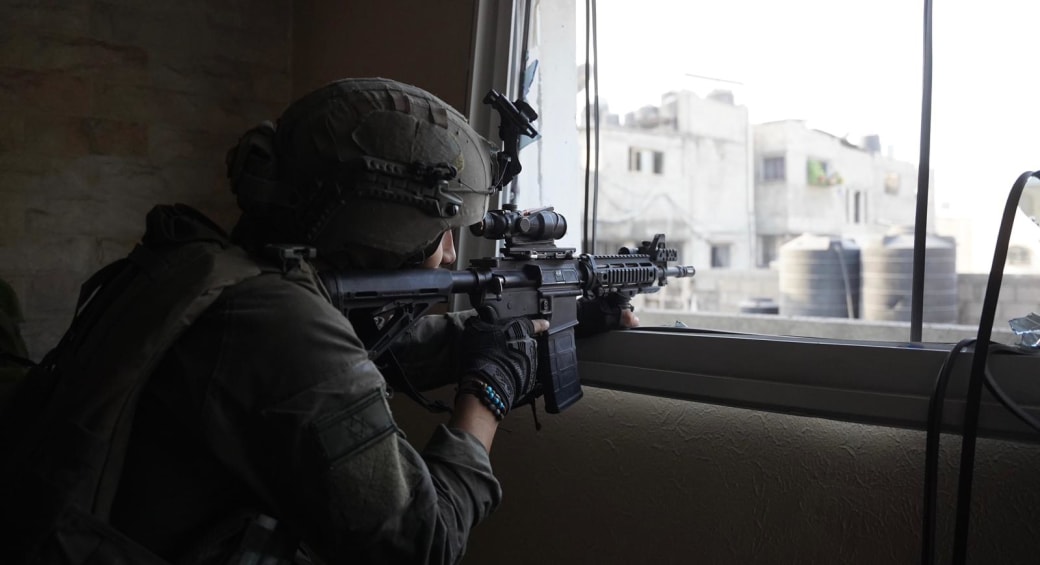
Economic harm from war with Hezbollah would be staggering, says expert
The forecast for economic growth in 2024 is grim, predicting negative 2% growth.
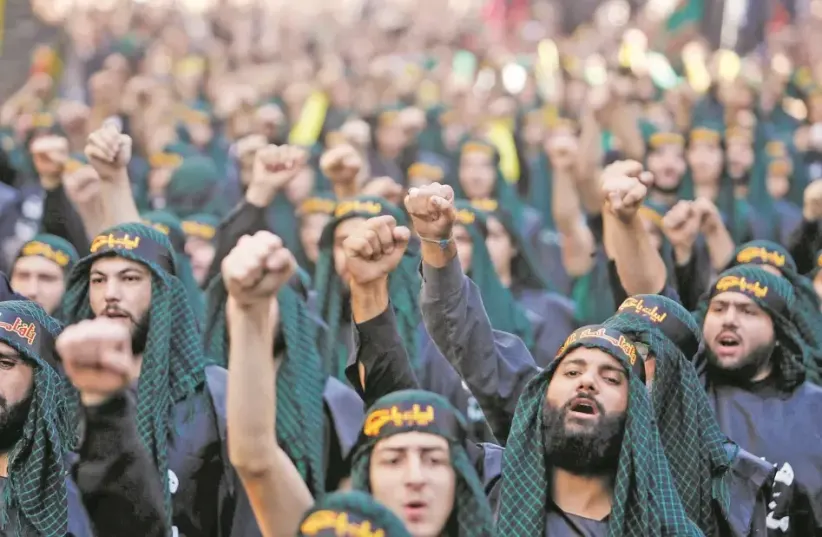
Further escalation in hostilities could result in staggering economic losses amounting to up to NIS 30 billion, according to Reichman University’s Aaron Institute for Economic Policy and MIND Israel.
The report highlighted an urgent need for decisive action from policymakers to mitigate the potential fallout.
Go to the full article >>IDF publishes names of four more soldiers killed in Gaza

The IDF published the names of four more soldiers who fell in battle in the Gaza Strip this week. Their families have been informed of their deaths.
The IDF published the names on Monday morning.
Sergeant-Major Urija Bayer, 20 years old, from Ma'alot Tarshiha, was a soldier in the Maglan Unit.
Bayer succumbed to his wounds incurred on Thursday while fighting in southern Gaza.
Sergeant-Major Liav Aloush, 21 years old, from Gedera, was a soldier in the IDF’s Duvdevan Unit. Aloush fell in combat in the southern Gaza Strip.
Staff-Sergeant-Major Etan Naeh, 26 years old, from Sde Eliyahu, was also in the Duvdevan Unit. Naeh was also killed fighting in the southern Gaza Strip.
Lastly, Staff-Sergeant-Major Tal Filiba, 23 years old, from Rehovot, was a soldier in the Yahalom Unit of the Combat Engineering Corps. Filiba likewise fell in combat in southern Gaza.
Go to the full article >>Netanyahu suggest changing name of 'Operation Swords of Iron' war
According to government sources, Netanyahu addressed the issue in the Cabinet meeting today, stating, "‘Swords of Iron’ is the name of an operation, not the name of a war."

Prime Minister Benjamin Netanyahu is considering changing the name of Operation Swords of Iron to another name.
According to government sources, Netanyahu addressed the issue today in the Cabinet meeting, arguing that "‘Swords of Iron’ is the name of an operation, not the name of a war."
Among other options, according to a report by Michael Shemesh on Kan 11, Netanyahu is considering names such as the Gaza War, the Simchat Torah War, and the Genesis War.
נתניהו מעוניין לשנות את שם המלחמה, לדבריו ״חרבות ברזל זה שם של מבצע, לא של מלחמה״.
— מיכאל שמש Michael Shemesh (@shemeshmicha) December 17, 2023
בין השמות הנבחנים: ׳מלחמת בראשית׳, ׳מלחמת עזה׳ ו׳מלחמת שמחת תורה׳.נתניהו אהב את השם ׳מלחמת בראשית׳ ‘the genesis war’. https://t.co/eWJewlsQMx
Sources close to Netanyahu confirmed that "he is interested in a name that will catch on publicly and internationally, and that the war will be remembered as a significant war, and not just as an operation."
Name changes have occured in the past
It should be noted that changing the name from an operation to a war is not necessarily an unusual move. The Galilee Peace Operation in 1982 turned into the Lebanon War and is known by that name today.
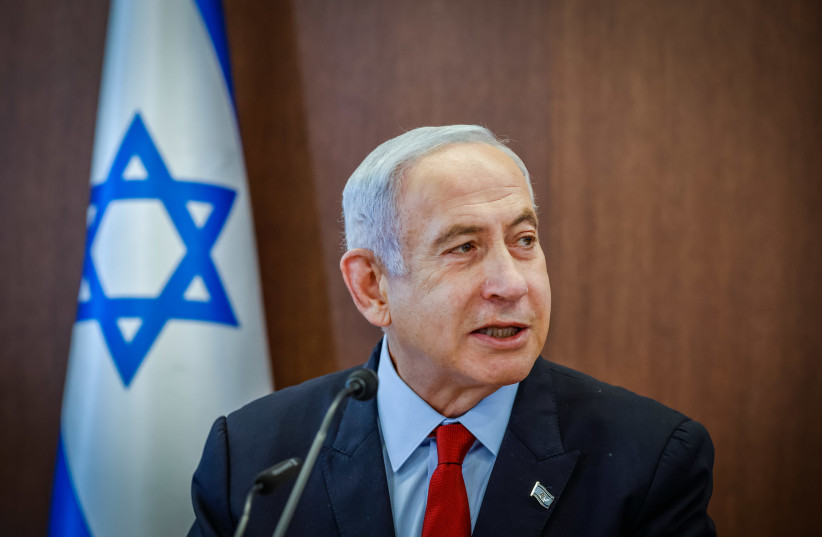
Similarly, the Second Lebanon War in 2006 initially began as "Operation Just Remission" and was later renamed "Operation Change of Direction" before ultimately being officially named the Second Lebanon War at its conclusion.
Go to the full article >>Hamas, Israel spar over terms of Gaza ceasefire, hostage releases - Egypt
Mossad Chief David Barnea met Friday with Qatari Prime Minister Mohammed bin Abdulrahman Al Thani in Europe, and according to some media reports is expected to hold a second meeting this week.
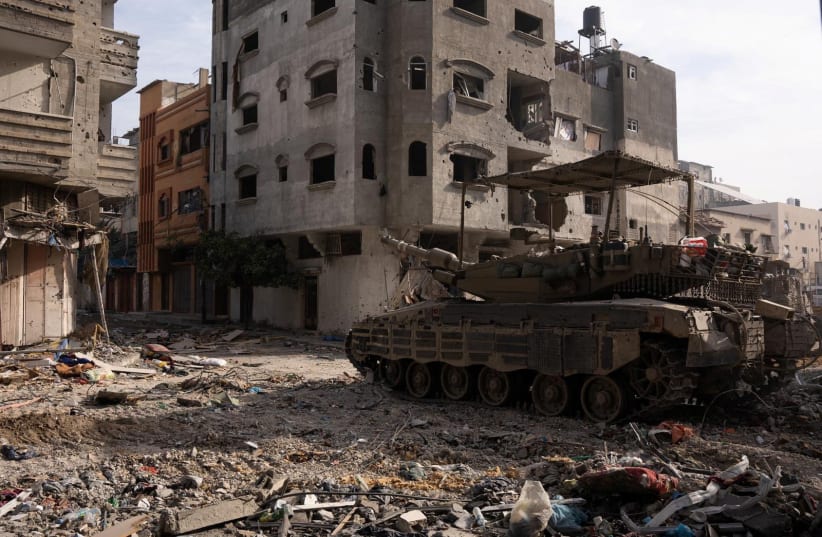
Israel and Hamas are both open to a hostage deal, although disagreements remain on how to implement it, two Egyptian sources told Reuters as US Secretary of Defense Lloyd Austin was slated to arrive in Israel on Monday.
Austin, who was in Kuwait and Bahrain, is also expected to visit Qatar, which along with Egypt is attempting to mediate a deal for the return of the more than 120 hostages remaining in Gaza.
Mossad Director David Barnea met Friday with Qatari Prime Minister Mohammed bin Abdulrahman Al Thani in Europe, and according to some media reports, he is expected to hold a second meeting with him this week.
The deal is expected to be more complex than the one in November for mostly women, children, and foreigners. It might include an Israeli release of Palestinian prisoners responsible for killing Israelis in past terrorist attacks, KAN News reported.
Hamas is insisting on setting the list of hostages to be released unilaterally and demanding that Israeli forces withdraw behind predetermined lines, the sources told Reuters.
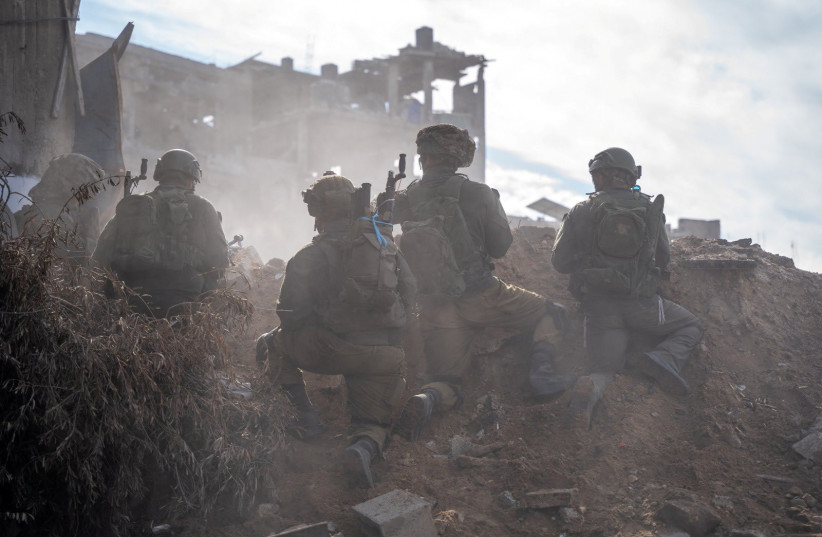
PM Netanyahu under pressure for another hostage deal
While Israel has agreed on Hamas setting the list, the sources said it demanded a timeline and to see the list before setting the time and duration of the ceasefire.
Israel refuses to withdraw, the sources added.
Prime Minister Benjamin Netanyahu and his government have been under pressure to conclude a deal to free all the hostages. Hamas has publicly said it would only consider a deal that includes an agreement to end the IDF’s military campaign in Gaza.
Israel has insisted that it plans to proceed with its military campaign to destroy Hamas, irrespective of any hostage deal. The past deal included an agreement to temporarily have a pause in fighting, and a new agreement is expected to do so as well.
As part of its efforts to negotiate a deal, and in a nod to its understanding with the United States, Israel over the weekend agreed to open its main commercial crossing into Gaza at Kerem Shalom for humanitarian aid for the first time since the start of the war.
“Israel is committed to continue working with our partners to facilitate large amounts of aid to the people of Gaza,” said Col. Moshe Tetro, head of COGAT’s Coordination and Liaison Administration to Gaza.
The opening of the Kerem Shalom crossing would allow Israel to “abide by the terms of our agreement with the United States,” he said.
It will also “increase the amount of aid entering the Gaza Strip, where it will continue to be met by international aid organizations that will deliver it to the people of Gaza,” he added.
“Our war is not with the people of Gaza,” Tetro said. “Our war is with Hamas.”
Israel had only allowed humanitarian aid to enter Gaza through Egypt’s Rafah crossing, a move that has been fraught with difficulty given that the passageway is not designed for the high-level flow of goods.
The US had promised to renovate the Rafah crossing, and Kerem Shalom would be used only as an interim crossing, Netanyahu said Saturday.
The United Nations Security Council on Monday is set to debate a resolution calling for the opening of all land, air, and sea routes into Gaza, although at present, there are only land crossings. Israel has long had a military blockage against air and sea routes into Gaza for security purposes.
The resolution also calls on the UN to establish a monitoring mechanism for the goods that enter Gaza. It also calls for the release of the hostages and a two-state resolution to the Israeli-Palestinian conflict.
French Foreign Minister Catherine Colonna, who visited Israel on Sunday, called for a humanitarian pause in the fighting, which she hoped would lead to a permanent ceasefire.
According to Hamas, 19,000 Palestinians have been killed in Gaza war-related violence with Israel, and about 7,000 of the fatalities were combatants. Hamas killed 1,200 people and seized about 250 captives when it attacked Israel on October 7, sparking the war.
Pope Francis on Sunday again suggested Israel was using “terrorism” tactics in Gaza, deploring the reported killing by the IDF of two Christian women who had taken refuge in a church complex.
At his weekly blessing, he referred to a statement about an incident on Saturday by the Latin Patriarchate of Jerusalem, the Catholic authority in the Holy Land.
An IDF “sniper” had killed the two women, Nahida Khalil Anton and her daughter Samar, as they walked to a convent of nuns in the compound of the Holy Family Parish, he said.
The Patriarchate statement said seven other people were shot and wounded as they tried to protect others.
“I continue to receive very grave and painful news from Gaza,” Francis said. “Unarmed civilians are the objects of bombings and shootings. And this happened even inside the Holy Family parish complex, where there are no terrorists, but families, children, people who are sick or disabled, nuns.”
Francis said they were killed by “snipers” and also referred to the Patriarchate’s statement that a convent of nuns of the order founded by Mother Teresa was damaged by Israeli tank fire.
“Some would say, ‘It is war. It is terrorism.’ Yes, it is war. It is terrorism,” he said.
The Foreign Ministry said the incident was still under review, and it had no immediate comment on the pope’s words.
It was the second time in less than a month that the pope used the word “terrorism” while speaking about events in Gaza.
On November 22, after meeting separately with Israeli relatives of hostages held by Hamas and Palestinians with family in Gaza, he said: “This is what wars do. But here we have gone beyond wars. This is not war. This is terrorism.”
Later that day, a messy dispute broke out about whether he used the word “genocide” to describe events in Gaza, with Palestinians who met him insisting that he did and the Vatican saying he did not.
Jewish groups criticized the pope for last month’s “terrorism” comments.
Go to the full article >>Hamas leaders hold secret meeting in Turkey - report
Turkey was deliberately chosen as the site of the meeting, as it was deemed safe enough for the leaders to meet there.
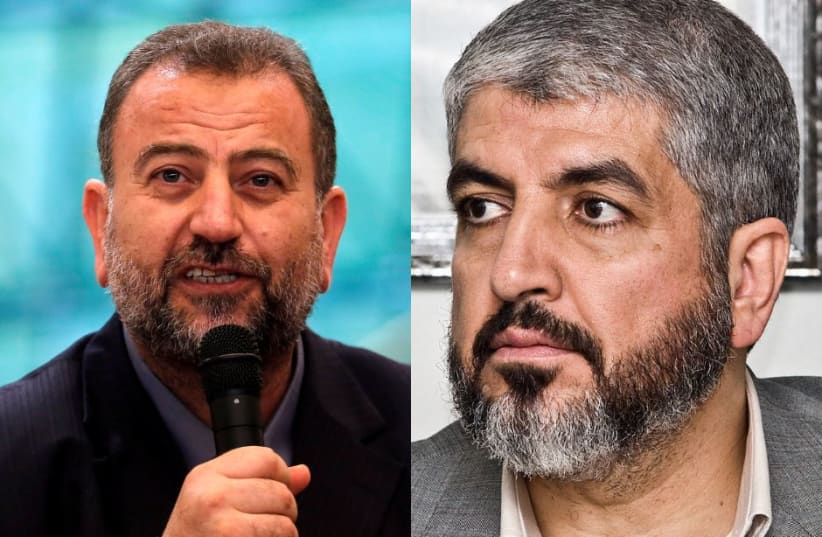
Senior Hamas officials held a secret meeting last week in Turkey, Israel's national broadcaster KAN revealed on Sunday night.
At the head of the meeting were Deputy Chairman of the Political Bureau of Hamas Saleh al-Arouri, who attended from his residence in Beirut, and former Hamas chief Khaled Mashal, who lives in the Qatari capital, Doha. Several other senior Hamas officials attended, according to KAN.
Turkey was deliberately chosen as the site of the meeting, as it was deemed safe enough for the leaders to meet there. Turkish President Recep Tayyip Erdogan has continually used anti-Israel rhetoric since the start of the Israel-Hamas War, declaring Israel guilty of war crimes.
The meeting was held to coordinate Hamas's next steps in the current conflict with Israel, which began on October 7 after hundreds of Hamas terrorists broke through the border and went on a murderous rampage across IDF bases and Israeli border communities, killing 1,200 and kidnapping almost 250 people. 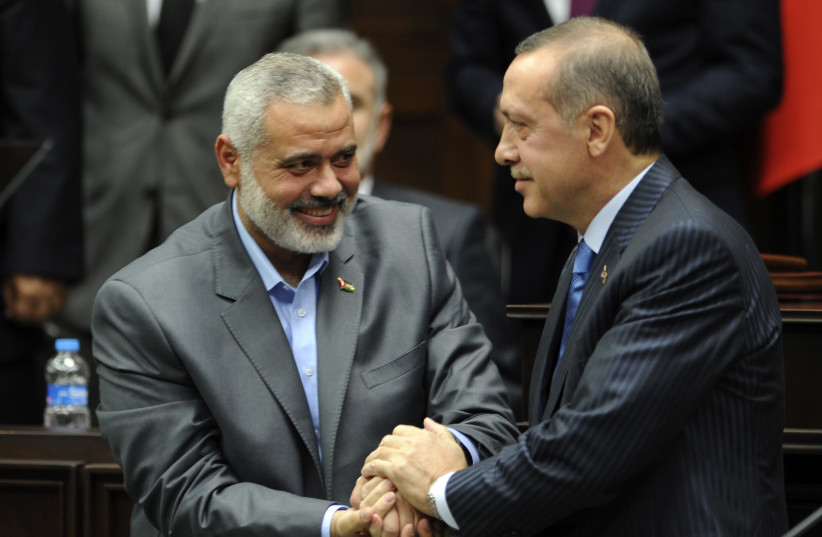
Hamas leaders have yet to determine their next steps in the war, both within Gaza itself and the role of Iran-proxy group Hezbollah in Lebanon, but KAN reported that another hostage-prisoner deal may be on the table. On Sunday night, Egyptian officials stated that Israel and Hamas are both open to a renewed ceasefire and hostage release, although disagreements remain on how it would be implemented.
The Hamas leadership chose to hold their secret meeting in a third country abroad and not by technological means, such as a video conference or an encrypted phone call, to allow everyone to sit and speak together in a secure environment to prevent Israeli intelligence from infiltrating.
Turkey warns of 'serious consequences'
Earlier this month, Turkey warned Israel of "serious consequences" if it tries to hunt down Hamas members living outside Palestinian territories, including in Turkey, a Turkish intelligence official said. This came in response to a recording of Shin Bet chief Ronen Bar, stating that Israel would hunt down Hamas leaders in Lebanon, Turkey, and Qatar, even if it takes years.
The same day, Erdogan claimed that Prime Minister Benjamin Netanyahu will be tried as a war criminal over Israel's offensive in Gaza, referring to the Likud party leader as the "butcher of Gaza."
In a speech at a meeting of an Organisation of Islamic Cooperation (OIC) committee in Istanbul in early December, Erdogan said that Gaza is Palestinian land and will always belong to the Palestinians.
"Israel is not only a murderer but also a thief," Erdogan said, adding, "We cannot let Israel occupy Gaza once again."
Go to the full article >>Mohammed Sinwar rides through a Hamas terror tunnel
IDF shows Yahya Sinwar's brother driving through giant Gaza tunnel
In a silent video, Sinwar can be seen giving instructions to the driver as they travel through the tunnel at a significant speed in a fairly modern-looking vehicle.
The IDF on Sunday issued a video of Muhammad Sinwar, the right-hand man and brother of Gaza chief Yahya Sinwar, being driven in a car through the massive four-kilometer long and 50-meter deep “strategic” level tunnel it revealed earlier Sunday.
In a silent video, Sinwar can be seen giving instructions to the driver as they travel through the tunnel at a significant speed in a fairly modern-looking vehicle.
The video is one of multiple pieces of intelligence evidence that Israel has that Muhammad was personally involved in developing the tunnel.
The tunnel is the largest and longest in Gaza that the IDF has ever found, directly linking the tip of northern Gaza to Jabalia toward the southern end of northern Gaza while running almost exclusively through civilian areas.
Sinwar has not been hiding in the tunnel since the war started.
Mohammed Sinwar, Gaza's chief brother and right-hand man
Some have said that though Yahya is the Gaza chief, Muhammad is his most important operator and would have difficulty controlling Hamas at the same level without his brother.
In addition, the IDF said that Hamas terrorists were using the tunnel to attack the IDF throughout the current war and even as recently as a few days ago. Terrorists who attacked the IDF from the tunnel a few days ago were killed in battle with the IDF.
The IDF first started to identify and clear the tunnel over a month ago, but it was so extensive and had so many levels and obstacles, such as blast doors, that it was not ready to be presented to the media until recent days.
It was discovered by a mix of the special ant-tunnel Yahalom Unit, engineers, and regular infantry working together with various technologies and intelligence to map out its full breadth.
One of the shafts from the tunnel comes as close as 400 meters from the Erez Crossing.
Besides that close point, the tunnel splits into a myriad of sub-tunnels, which are outfitted with heavy deeper tunnel-digging machinery that the IDF has not previously encountered.
In addition, the tunnel has a variety of electricity connections, plumbing, communications, vehicles, extensive weaponry, and blast doors designed to block or slow any progress by the IDF.
IDF estimates that special tunnel units were brought from Khan Younis to expand the tunnel deep into northern Gaza using millions of dollars of investment.
The IDF has not found any signs of Israeli hostages having been held in the tunnel as it did at Rantisi Hospital.
However, since the Rantisi Hospital discovery of traces of hostages having been held there, it seems that Hamas has become more careful about removing such traces.
Also, if the hostages were merely moved through the tunnel once to get them from northern to southern Gaza, there might not be as many traces as at Rantisi Hospital, where it appears they were held in a single spot for an extended period.
IDF Yahalom commander and Col. Chaim Cohen said, “we have located a strategic tunnel which is so extensive that it indicates it was to be used for a large-scale invasion of the Israeli Gaza corridor.”
Cohen added that both of the Sinwar brothers had decided to invest huge amounts of resources in the terror tunnel instead of in schools and other institutions, which could have benefitted Gazan civilians.
“We will continue to pursue Hamas terrorists above and below ground, in every place, and there will be no place,” that is safe for them to hide, he said.
Go to the full article >>IDF exposes massive tunnel system in Gaza built by Sinwar's brother
IDF sources said that they identified the tunnel as connected with Muhammad Sinwar from various intelligence items.
The IDF has exposed a four-kilometer-long, 50-meter deep “strategic” level tunnel established personally by Muhammad Sinwar, the right-hand man and brother of Gaza chief Yahya Sinwar, it announced on Sunday.
The tunnel is the largest and longest in Gaza that the IDF has ever found, directly linking the tip of northern Gaza to Jabalia toward the southern end of northern Gaza while running almost exclusively through civilian areas.
IDF sources said that they identified the tunnel as connected with Muhammad Sinwar from various intelligence items, including from Hamas video surveillance, which the IDF later seized control of.
That said, Sinwar has not been hiding in the tunnel since the war started.
Some have said that though Yahya is the Gaza chief, Muhammad is his most important operator and would have difficulty controlling Hamas at the same level without his brother.
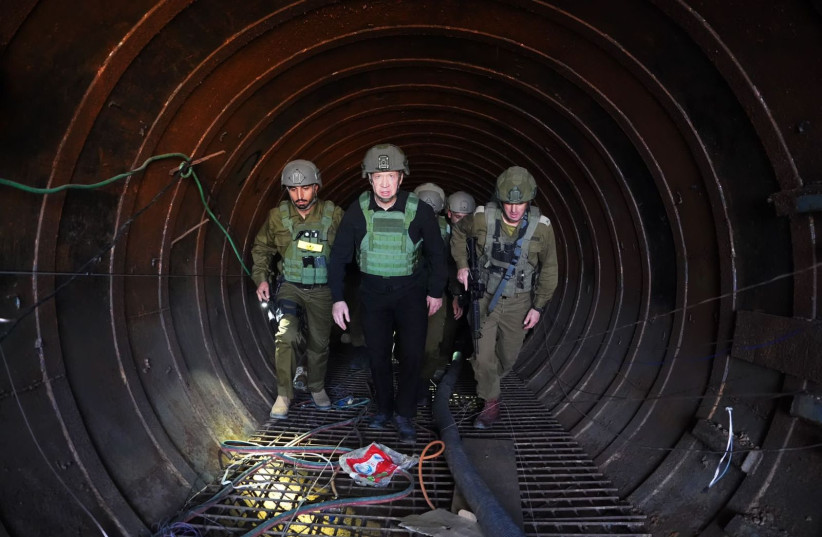
Hamas terrorists recently used Sinwar's tunnel, IDF says
In addition, the IDF said that Hamas terrorists were using the tunnel to attack the IDF throughout the current war and even as recently as a few days ago. Terrorists who attacked the IDF from the tunnel a few days ago were killed in battle with the IDF.
The IDF first started to identify and clear the tunnel already over a month ago, but it was so extensive and had so many levels and obstacles, such as blast doors, that it was not ready to be presented to the media until recent days.
It was discovered by a mix of the special anti-tunnel Yahalom Unit, engineers, and regular infantry working together with various technologies and intelligence to map out its full breadth.
One of the shafts from the tunnel comes as close as 400 meters from the Erez Crossing.
Besides that close point, the tunnel splits into many sub-tunnels, outfitted with heavy, deeper tunnel-digging machinery that the IDF has not previously encountered.
In addition, the tunnel has a variety of electricity connections, plumbing, communications, vehicles, extensive weaponry, and blast doors designed to block or slow any progress by the IDF.
IDF estimates that special tunnel units were brought from Khan Younis to expand the tunnel deep into northern Gaza using millions of dollars of investment.
Hamas becoming better at removing traces of hostages
The IDF has not found any signs of Israeli hostages having been held in the tunnel as it did at Rantisi Hospital.
However, since the Rantisi Hospital discovery of traces of hostages having been held there, it seems that Hamas has become more careful about removing such traces.
Also, if the hostages were merely moved through the tunnel once to get them from northern to southern Gaza, there might not be as many traces as at Rantisi Hospital, where it appears they were held in a single spot for an extended period.
IDF Yahalom commander and Col. Chaim Cohen said, “we have located a strategic tunnel which is so extensive that it indicates it was to be used for a large-scale invasion of the Israeli Gaza corridor.”
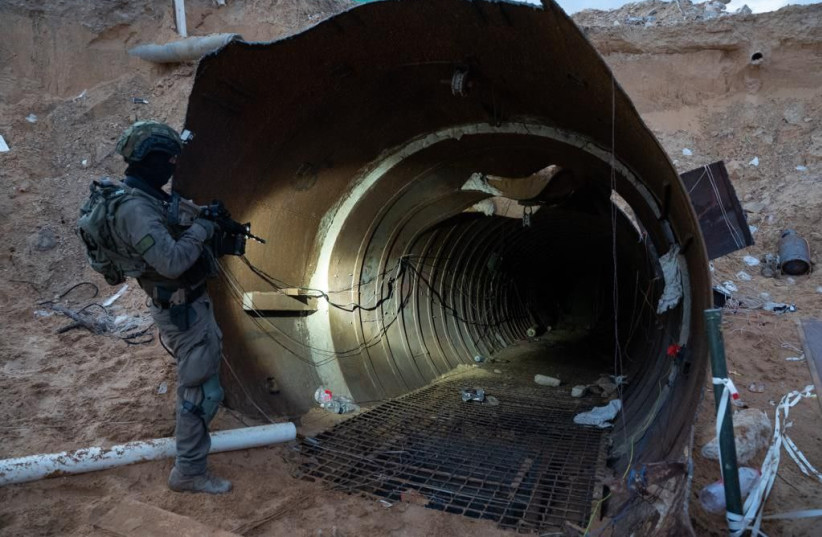
Cohen added that both of the Sinwar brothers had decided to invest huge amounts of resources in the terror tunnel instead of in schools and other institutions, which could have benefitted Gazan civilians.
“We will continue to pursue Hamas terrorists above and below ground, in every place, and there will be no place,” that is safe for them to hide, he said.
Despite the success of finding the tunnel, the IDF is expected to probe why its intelligence unit was not aware of the tunnel prior to the invasion.
For example, in May 2021, the IDF made a big announcement about having destroyed Hamas's "Metro," considered its largest tunnel network at the time.
In addition, the size and scale of the tunnel suggest that Hamas's tunnel network is not only larger than what the IDF expected on the eve of the war, but also significantly larger than what it expected even weeks into the invasion.
This could mean a longer presence for the IDF to destroy the full tunnel network beyond the end of the "main war," expected to conclude around the end of January.
Go to the full article >>IDF finds killed Gaza hostages' SOS sign, chief says incident was avoidable
After the incident, IDF troops discovered the hostages had written "help" and "SOS" in Hebrew and English inside the building in case they were found.
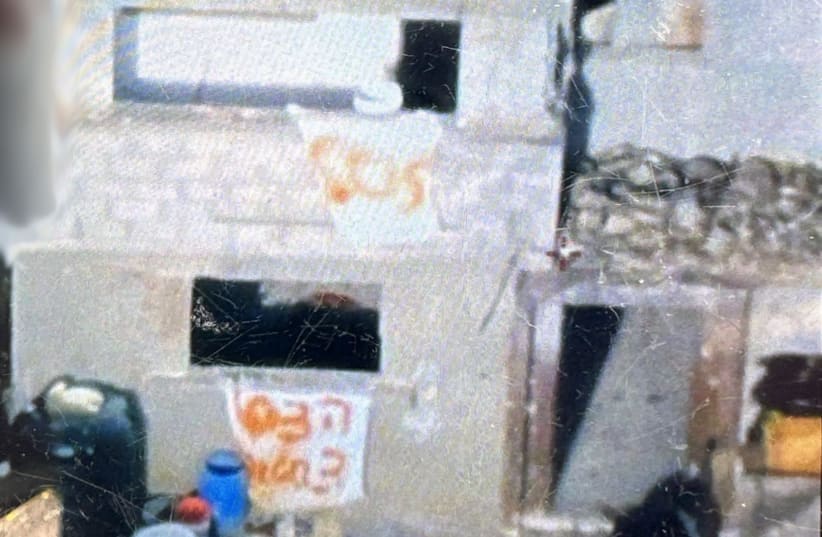
IDF Chief of Staff Herzi Halevi held a situational assessment on the ground in Gaza on Sunday during a visit to troops of the 99th Division.
Addressing the soldiers, Halevi referred to the accidental shooting on Friday of three Israeli hostages taken by Hamas, saying, "This was a very difficult and painful incident, but one that could very easily have not happened.
"We have set three goals: to dismantle Hamas, to restore security to the residents of the Gaza border area, and the third mission is to recover the hostages."
Yotam Haim, Alon Shamriz, and Samer Talalka were all killed by IDF soldiers who opened fire as the hostages approached them as they exited the building where they were kept hostages.
The three were stripped to the waist, with raised hands and waving a white flag. The hostages also shouted out "help" in Hebrew but were misidentified as a threat and shot. 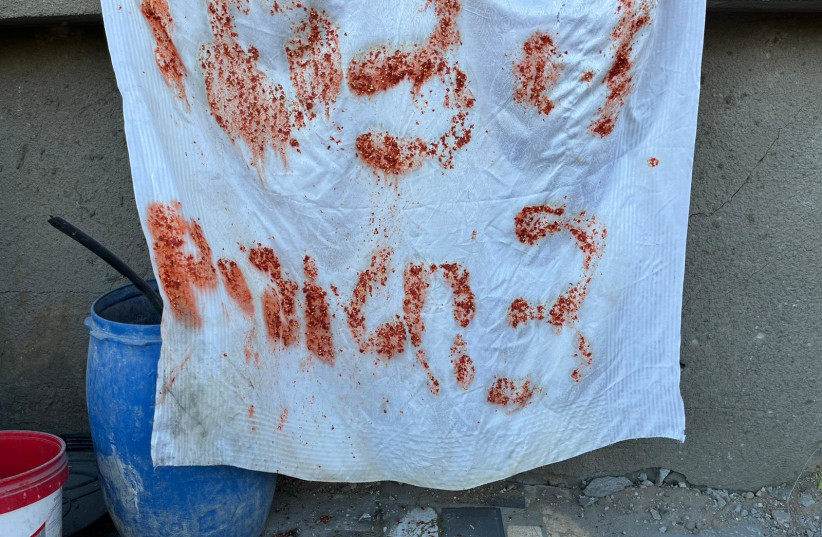
After the incident, IDF troops discovered the hostages had written "help" and "SOS" in Hebrew and English inside the building in case they were found.
"Three people walked out during this incident," Halevi said. "They took into account that they were taking a risk approaching IDF troops and, to reduce the risk, they really thought about [what to do.] They took off their shirts so that no one would think they had explosives, and they held a white cloth on a pole to identify themselves. They spoke in Hebrew. They called for help."
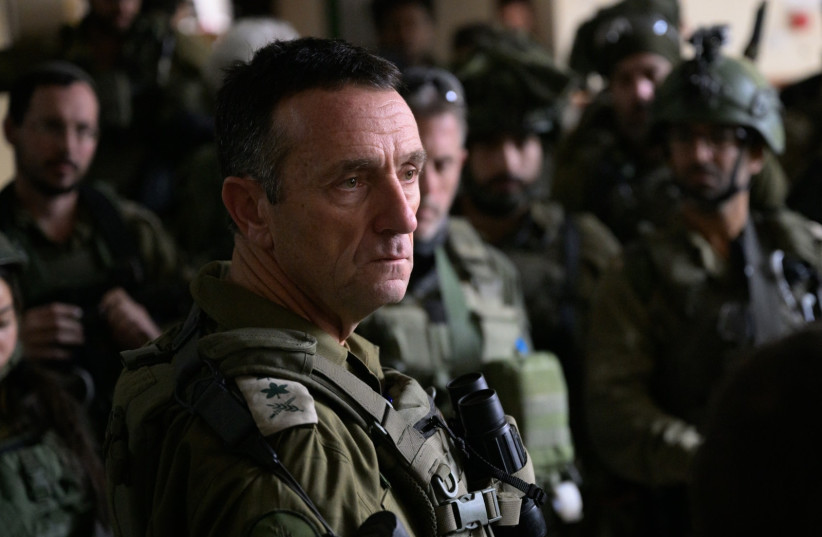 IDF Chief of Staff Herzi Halevi speaks to Israeli soldiers on December 17, 2023 (credit: IDF SPOKESPERSON'S UNIT)
IDF Chief of Staff Herzi Halevi speaks to Israeli soldiers on December 17, 2023 (credit: IDF SPOKESPERSON'S UNIT)
IDF chief: If approached by people with raised hands, do not shoot
 IDF Chief of Staff Herzi Halevi speaks to Israeli soldiers on December 17, 2023 (credit: IDF SPOKESPERSON'S UNIT)
IDF Chief of Staff Herzi Halevi speaks to Israeli soldiers on December 17, 2023 (credit: IDF SPOKESPERSON'S UNIT)Halevi, however, had a stern message for the soldiers should such an incident arise in the future. "You see two people; they have their hands up and no shirts. Take two seconds, and I want to tell you something no less important: if it's two Gazans with a white flag who come out to surrender, do we shoot at them? Absolutely not," he said.
"That is not the IDF. I tell you, even those who fought [against us] and now put down their weapons and raise their hands, we treat them the same. We do not shoot at them."
The soldiers who mistakenly killed the hostages violated the rules of engagement, Halevi announced on Saturday night.
The IDF announced on Sunday evening that they were investigating another building that could potentially contain more hostages.
Israel-Hamas war: What you need to know
- Hamas launched a massive attack on October 7, with thousands of terrorists infiltrating from the Gaza border and taking some 240 hostages into Gaza
- Over 1,200 Israelis and foreign nationals were murdered, including over 350 in the Re'im music festival and hundreds of Israeli civilians across Gaza border communities